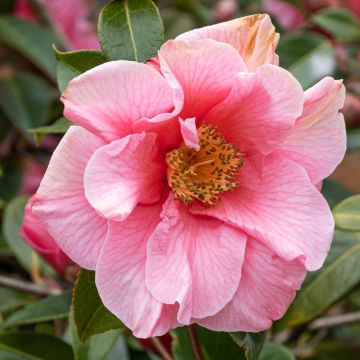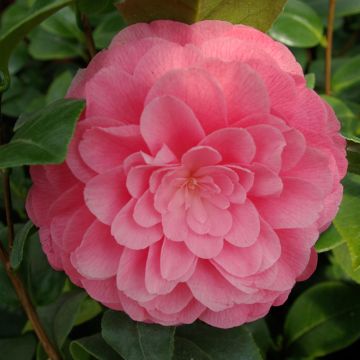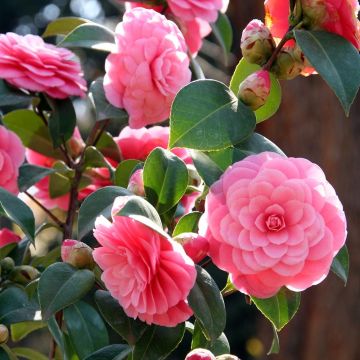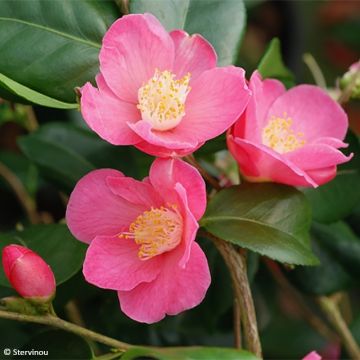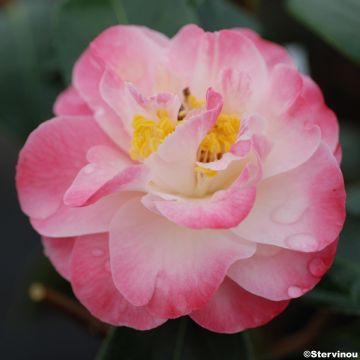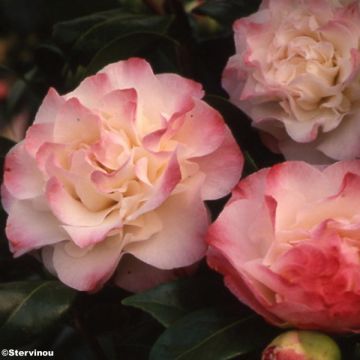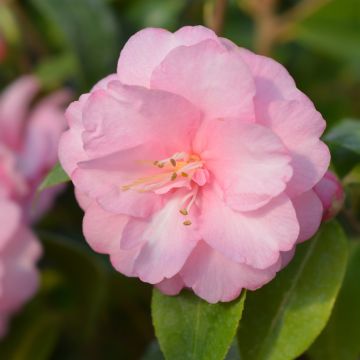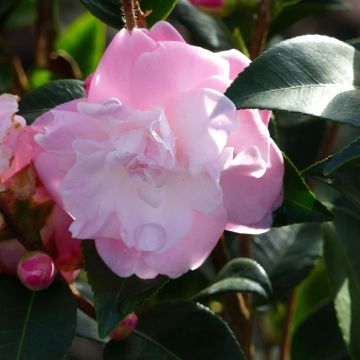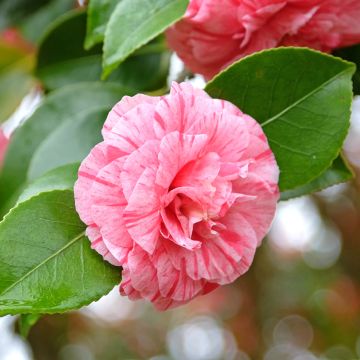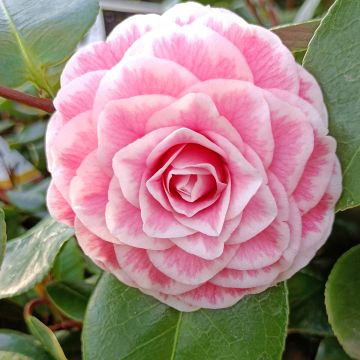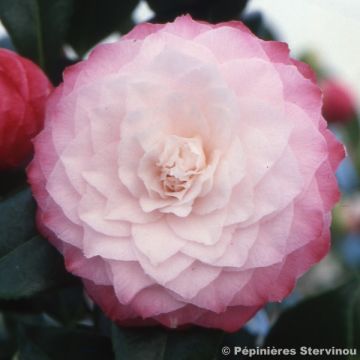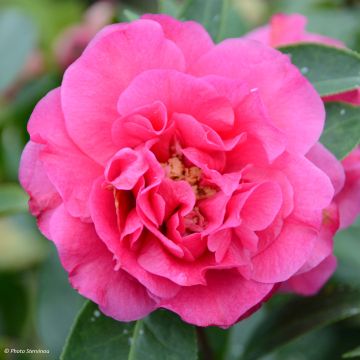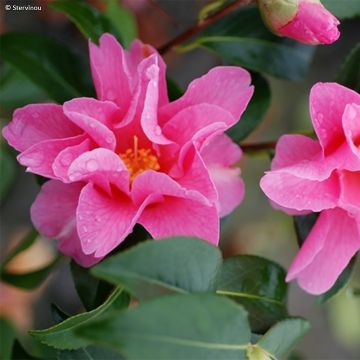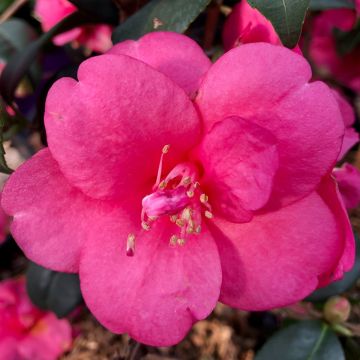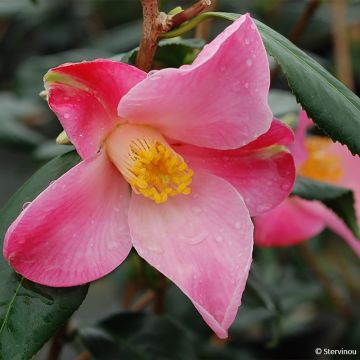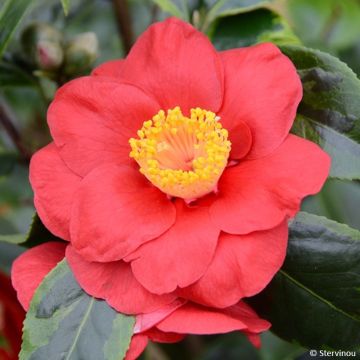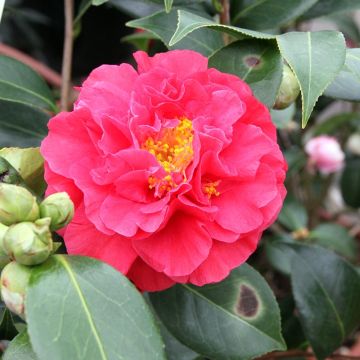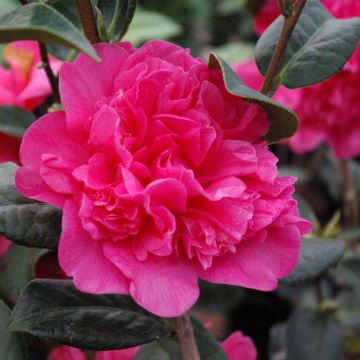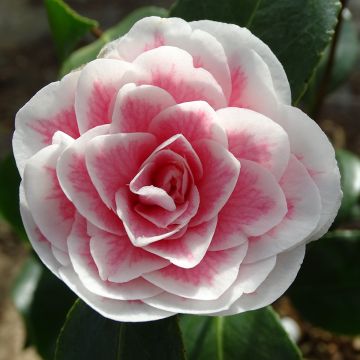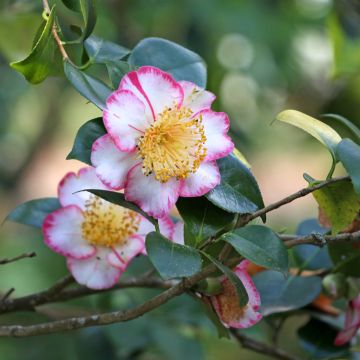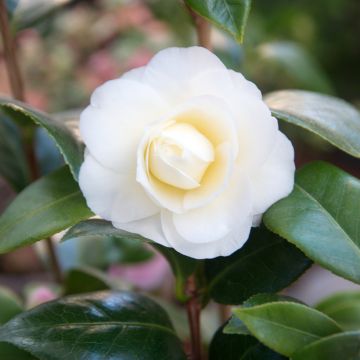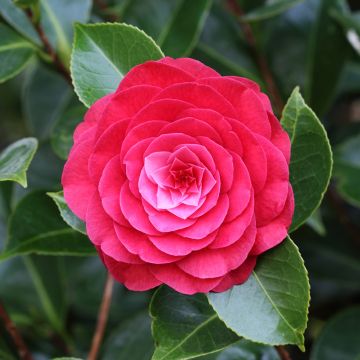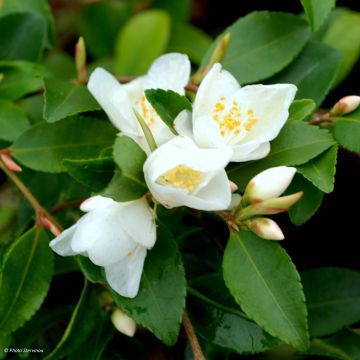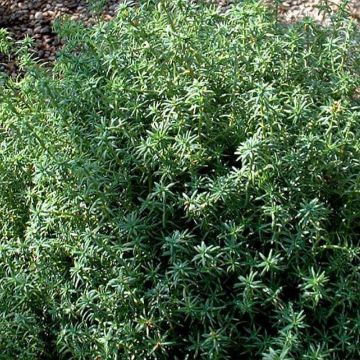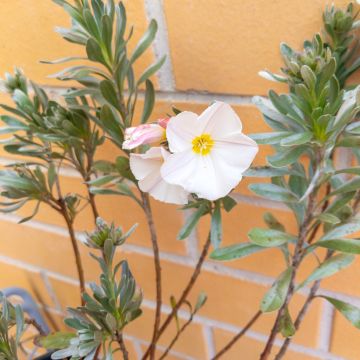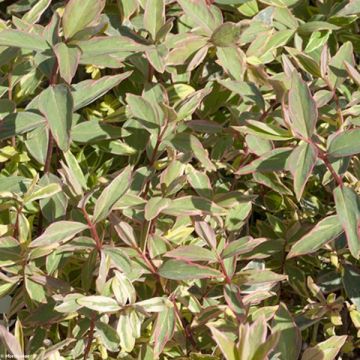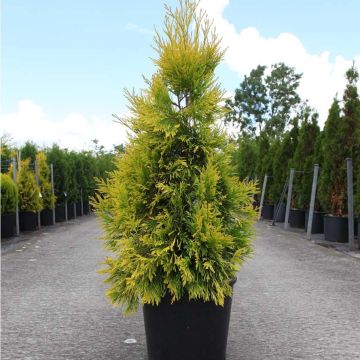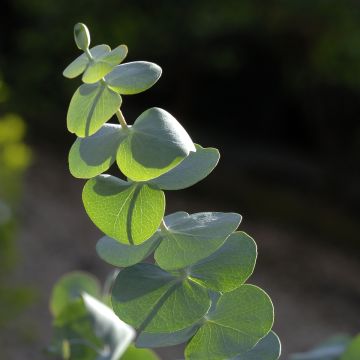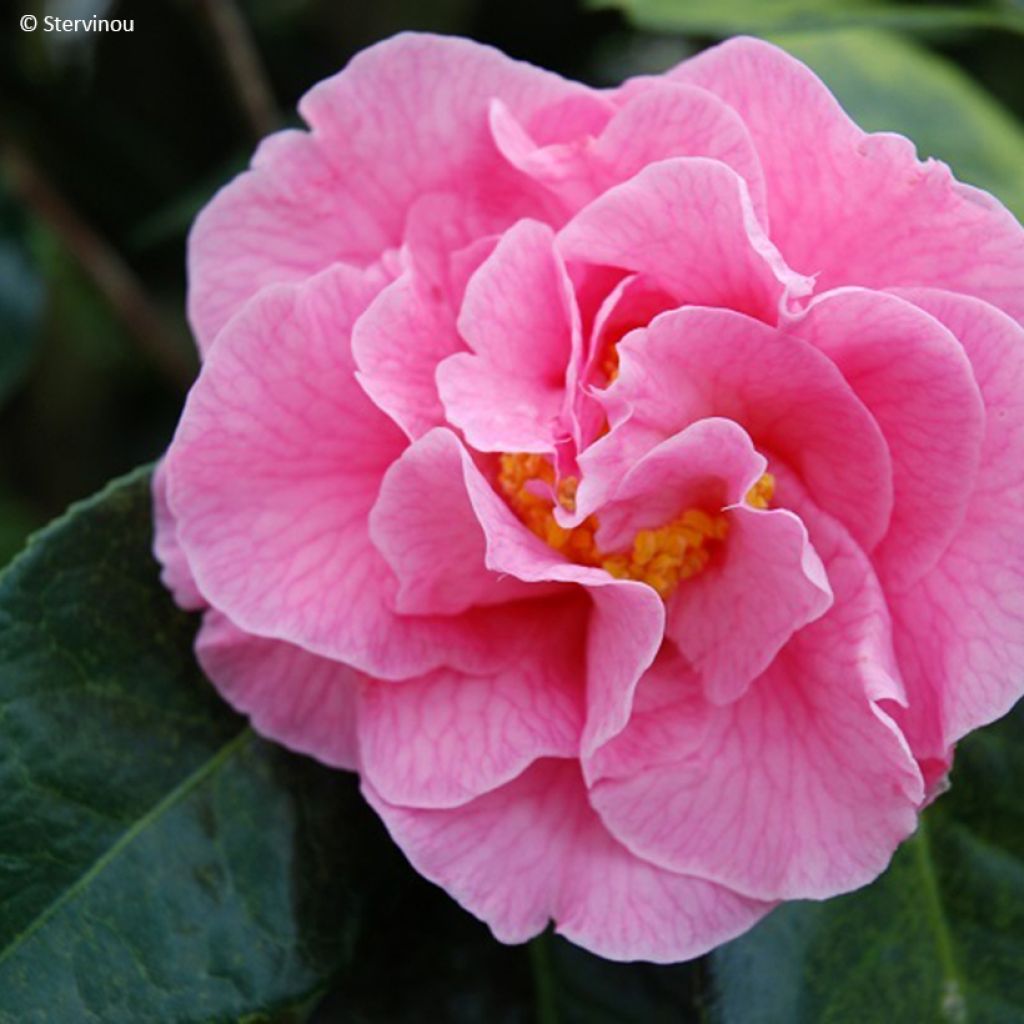

Camellia x reticulata Lasca Beauty
Camellia x reticulata Lasca Beauty
Camellia x reticulata Lasca Beauty
Why not try an alternative variety in stock?
View all →This plant carries a 24 months recovery warranty
More information
We guarantee the quality of our plants for a full growing cycle, and will replace at our expense any plant that fails to recover under normal climatic and planting conditions.
From €5.90 for pickup delivery and €6.90 for home delivery
Express home delivery from €8.90.
Does this plant fit my garden?
Set up your Plantfit profile →
Description
The Camellia reticulata 'Lasca Beauty' is a medium-sized bush, with dark green evergreen foliage that is particularly ornamental all year round. At the end of winter, it also provides a beautiful setting for the absolutely charming flowering. The large diameter flowers are semi-double, and the pink petals undulate delicately against the golden stamens in the center. The abundant and imposing flowers truly catch all eyes and herald spring in the most beautiful way. Its hardiness slightly lower than that of other varieties restricts its planting possibilities to the Atlantic coastal area where it will find the mild and humid conditions it appreciates, without excessive sunlight as in the southern region. Elsewhere, it can be grown in a large pot to be sheltered during winter.
The Camellia is the main genus of the small Theaceae family, both in terms of ornamental and economic value, with the Camellia sinensis, whose young leaves are used to produce tea. However, this plant family also includes some other ornamental plants such as Franklinia alatamaha or Stewartia, whose flowers strongly resemble those of Camellias. The Camellia genus comprises between 100 and 250 wild species (according to botanical classifications), originating from Asia. Revered for centuries in Japan, this favorite plant of breeders and collectors now comes in nearly 40,000 horticultural varieties!
'Lasca Beauty' is the result of the cross-breeding between 'Mrs. D. W. Davis', a variety of Camellia japonica with very large semi-double flowers (15.5 cm in diameter), very pale pink, introduced to the market in the 1950s, and the Camellia reticulata 'Cornelian', with large semi-double flowers in dark pink to red intermingled with white, imported from China to the United States in 1948. The C. reticulata is a Chinese species that grows in the mountainous regions of the Yunnan province, where it can grow into true small trees of 10 m in height in this humid subtropical climate, tempered by altitude. Dr. Clifford Parks obtained this hybrid in California, during his work at the Los Angeles arboretum where a 6-year-old plant bloomed for the first time in 1970. This new variety was then registered in 1973 and cultivated by David L. Feathers in Lafayette, also in California.
'Lasca Beauty' has a much more limited development than the botanical species, forming in 10 years of cultivation a bush about 1.50 m high and 1.20 m wide. In our latitudes, it generally reaches a height of 2 m at maturity, but can grow significantly taller in other climates, and then become a large, well-branched bush. Its foliage is truly ornamental throughout the year, consisting of evergreen leaves of a beautiful dark green, with a shiny surface, of a very regular elliptical shape measuring approximately 13 cm long by 8 cm wide. This dark vegetation is a perfect setting to enhance the flowering which usually starts in February and extends into early spring. The bush produces at this time very large flowers of 15, even 16 cm in diameter, in a more or less intense bright pink. The semi-double corolla consists of 15 petals with undulations reminiscent of certain peonies. In the center, numerous stamens with white filaments topped with golden anthers create a subtle and harmonious contrast against the pink of the corolla. Spectacular and generous, the flowering brightens the garden at a time when the sky is still often dark.
The 'Lasca Beauty' reticulated Camellia should be grown in a pot to be sheltered from the cold in regions where frost is too severe, as it can only withstand temperatures around -9°C. It will be particularly comfortable in the humid and moderately sunny Atlantic coastal area, and preferably in partial shade in the southwest. Plant it in a border massif, alongside other plants with staggered bloomings to enjoy flowers for a good part of the year. Rhododendrons and Azaleas that share the same needs will then take over with panache, the countless available varieties offering an extremely diverse range of colors, until late spring. The Hydrangeas will then flourish all summer, offering perhaps an even wider range of flowers in flat, spherical, or conical heads, ranging from white to blue through all shades of pink and red. Camellia sasanqua varieties, or Autumn Camellias, will enliven this season, while for winter, you can rely on Hamamelis, with their astonishing flowers elongated in narrow yellow, red, orange, or purple filaments.
Plant habit
Flowering
Foliage
Botanical data
Camellia
x reticulata
Lasca Beauty
Theaceae
Cultivar or hybrid
Other Traditional Camellia
Planting and care
The Camellia 'Lasca Beauty' thrives in full sun in a favourable climate, such as in Atlantic regions, but it performs best in partial shade, protected from scorching sun and sheltered from strong winds. Plant it in a cool, humus-bearing, acidic, and well-drained soil. Avoid planting the bush too deeply; the top of the root ball should be covered by 3 cm of soil. In winter, cover it with a 5 to 7 cm thick layer of mulch made of leaf compost and crushed bark. Beware of late frosts that can damage the flowers and buds. During dry periods, water the bush to prevent the dropping of flower buds. In mild climates, it's recommended to plant the camellia in autumn to promote good root development and better flowering in the first year. However, if winters are slightly colder, it's better to wait until spring before planting it in the ground so it has time to establish its root system before facing the next winter. This variety is indeed slightly less hardy than others, tolerating temperatures down to about -9°C.
Possible diseases include chlorosis caused by excess limestone, brown spots caused by leaf scorching in south-facing exposure, sooty mould, scale insects, and vine-plant weevils.
Pruning is not necessary and should only be done if needed just after flowering, before the emergence of new spring shoots, and sparingly. Most camellia hybrids do not recover from overly severe pruning.
Planting period
Intended location
Care
This item has not been reviewed yet - be the first to leave a review about it.
Evergreen shrubs
Haven't found what you were looking for?
Hardiness is the lowest winter temperature a plant can endure without suffering serious damage or even dying. However, hardiness is affected by location (a sheltered area, such as a patio), protection (winter cover) and soil type (hardiness is improved by well-drained soil).

Photo Sharing Terms & Conditions
In order to encourage gardeners to interact and share their experiences, Promesse de fleurs offers various media enabling content to be uploaded onto its Site - in particular via the ‘Photo sharing’ module.
The User agrees to refrain from:
- Posting any content that is illegal, prejudicial, insulting, racist, inciteful to hatred, revisionist, contrary to public decency, that infringes on privacy or on the privacy rights of third parties, in particular the publicity rights of persons and goods, intellectual property rights, or the right to privacy.
- Submitting content on behalf of a third party;
- Impersonate the identity of a third party and/or publish any personal information about a third party;
In general, the User undertakes to refrain from any unethical behaviour.
All Content (in particular text, comments, files, images, photos, videos, creative works, etc.), which may be subject to property or intellectual property rights, image or other private rights, shall remain the property of the User, subject to the limited rights granted by the terms of the licence granted by Promesse de fleurs as stated below. Users are at liberty to publish or not to publish such Content on the Site, notably via the ‘Photo Sharing’ facility, and accept that this Content shall be made public and freely accessible, notably on the Internet.
Users further acknowledge, undertake to have ,and guarantee that they hold all necessary rights and permissions to publish such material on the Site, in particular with regard to the legislation in force pertaining to any privacy, property, intellectual property, image, or contractual rights, or rights of any other nature. By publishing such Content on the Site, Users acknowledge accepting full liability as publishers of the Content within the meaning of the law, and grant Promesse de fleurs, free of charge, an inclusive, worldwide licence for the said Content for the entire duration of its publication, including all reproduction, representation, up/downloading, displaying, performing, transmission, and storage rights.
Users also grant permission for their name to be linked to the Content and accept that this link may not always be made available.
By engaging in posting material, Users consent to their Content becoming automatically accessible on the Internet, in particular on other sites and/or blogs and/or web pages of the Promesse de fleurs site, including in particular social pages and the Promesse de fleurs catalogue.
Users may secure the removal of entrusted content free of charge by issuing a simple request via our contact form.

































